1960's Girl Groups
Tight harmonies, teen themes, and powerful pop hooks.
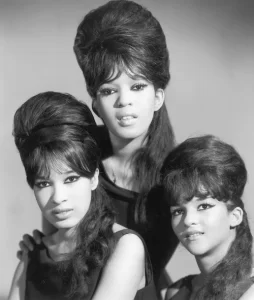
The Ronettes
The Ronettes played a key role in shaping the sound and style of rock and roll during the early 1960s. Known for their powerful vocals, striking looks, and bold attitude, the group helped redefine the girl group image. Their collaboration with producer Phil Spector introduced the “Wall of Sound” technique, especially evident in their biggest hit, “Be My Baby.” This production style layered instruments and vocals to create a rich, dramatic sound that influenced countless rock and pop artists, including The Beatles and The Beach Boys. Ronnie Spector’s raw, emotional voice brought a new level of intensity to love songs, giving them a rock edge that set the Ronettes apart. Their impact went beyond music—they helped pave the way for female performers in rock and roll, blending glamour with strength, and inspiring future generations of artists to push boundaries in sound and style.
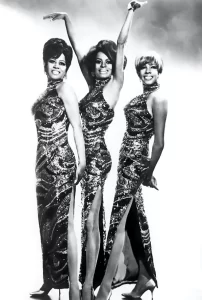
The Supremes
The Supremes, one of Motown’s most successful acts, played a pivotal role in shaping rock and roll by blending pop, soul, and R&B into a polished, crossover sound. Their chart-topping hits in the 1960s—such as “Where Did Our Love Go” and “You Can’t Hurry Love”—brought African American music into the mainstream, paving the way for other Black artists in rock and pop genres. Their sophisticated image, choreographed performances, and Diana Ross’s charismatic lead vocals influenced rock and roll’s presentation and style. The Supremes inspired countless female groups and helped break down racial barriers in the music industry. Their success demonstrated that Black artists could achieve mass-market appeal, influencing the integration of soul and pop into the evolving rock landscape. They also helped Motown become a powerhouse label that deeply impacted the development of modern rock and pop music.

The Shirelles
The Shirelles were one of the first successful all-female groups of the rock and roll era, and they played a major role in shaping the girl group sound of the early 1960s. With hits like “Will You Love Me Tomorrow” and “Mama Said,” they blended doo-wop, R&B, and pop in a way that appealed to both Black and white audiences. Their success helped open doors for future girl groups like The Ronettes and The Supremes. The Shirelles’ harmonies, heartfelt lyrics, and youthful themes connected with teen listeners and influenced the emotional storytelling found in rock and pop music. Working with top songwriters like Carole King and Gerry Goffin, they helped introduce more mature themes into rock lyrics, especially from a female perspective. Their blend of vulnerability and strength left a lasting impact on the role of women in rock and roll and popular music overall.
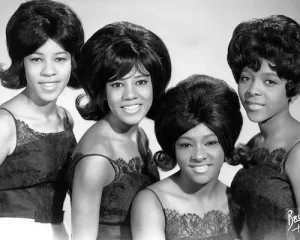
The Crystals
The Crystals were a key part of the early 1960s girl group movement and had a major influence on the development of rock and roll. Produced by Phil Spector, they were among the first groups to showcase his famous “Wall of Sound” technique—a layered, echoing production style that became a staple in pop and rock music. Hits like “He’s a Rebel” and “Da Doo Ron Ron” combined catchy melodies with emotional vocals, helping to define the girl group sound and bringing a fresh, youthful energy to rock and roll. The Crystals’ songs often featured strong, independent female voices, paving the way for women to take a more prominent role in rock music. Their success also helped solidify the role of producers in shaping the sound of popular music. Through style, sound, and attitude, The Crystals left a lasting mark on the evolution of rock and roll.
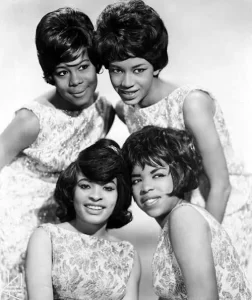
The Marvelettes
The Marvelettes were one of Motown’s first successful girl groups and played a crucial role in shaping the sound of rock and roll in the early 1960s. Their hit “Please Mr. Postman” was Motown’s first No. 1 single on the Billboard Hot 100, helping to launch the label’s success and bringing a youthful, energetic style to mainstream music. The group blended doo-wop, R&B, and pop, influencing the development of both rock and soul. Their success proved that teenage girl groups could top the charts, inspiring future acts like The Supremes and Martha and the Vandellas. The Marvelettes also helped define the classic Motown sound—tight harmonies, catchy hooks, and danceable rhythms—which would become a major influence on rock and pop artists around the world. Their contribution opened doors for Black female performers and helped shape the direction of 1960s rock and roll.
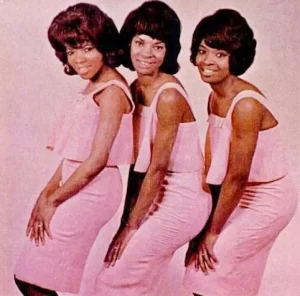
Martha and the Vandellas
Martha and the Vandellas were a powerful force in 1960s music, blending soul, R&B, and pop into a sound that helped shape rock and roll. With energetic hits like “Dancing in the Street” and “Heat Wave,” they brought a raw, danceable intensity that influenced both Motown and the broader rock scene. Their music often carried a sense of urgency and social awareness, making them stand out among their peers. Lead singer Martha Reeves delivered strong, gospel-influenced vocals that added depth and passion to their songs. The group’s bold, confident presence challenged stereotypes about women in music and inspired future female rock and soul performers. Their influence reached artists like Bruce Springsteen, who admired their energy and message-driven music. As part of the Motown movement, Martha and the Vandellas played a key role in bringing Black voices to the forefront of popular music and shaping the sound of rock and roll.
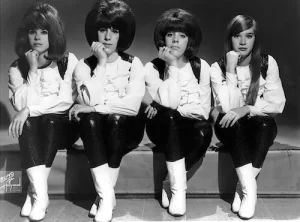
The Shangri-Las
The Shangri-Las brought a dramatic, edgy twist to the girl group genre and left a lasting mark on rock and roll music. Known for hits like “Leader of the Pack” and “Remember (Walking in the Sand),” they stood out with their theatrical storytelling, rebellious themes, and emotional intensity. Unlike many girl groups of the time, The Shangri-Las often sang about teen angst, heartbreak, and forbidden love, influencing the lyrical direction of rock music. Their use of spoken word segments, sound effects, and bold vocals gave their songs a raw, cinematic quality that appealed to both pop and rock audiences. They helped bridge the gap between traditional girl group pop and the edgier sounds of rock, paving the way for punk and alternative artists who embraced themes of rebellion and emotional honesty. The Shangri-Las showed that teen pop could be dark, complex, and deeply influential in shaping rock and roll’s evolution.
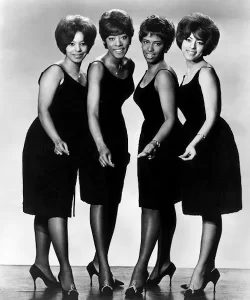
The Chiffons
The Chiffons were a key part of the 1960s girl group movement and played an important role in blending pop, R&B, and early rock and roll. With their smash hit “He’s So Fine,” they brought catchy melodies, tight harmonies, and youthful energy to the charts, helping to define the sound of the era. Their music had a playful yet emotional quality that connected with teenage audiences and influenced the way love and heartbreak were portrayed in pop and rock songs. The Chiffons’ success also highlighted the growing influence of female vocal groups in a male-dominated industry, opening doors for other acts. Their style and sound inspired both pop and rock musicians, including George Harrison, whose song “My Sweet Lord” led to a famous copyright case due to its similarity to “He’s So Fine.” The Chiffons’ blend of charm and vocal talent left a lasting impact on the evolution of rock and roll.
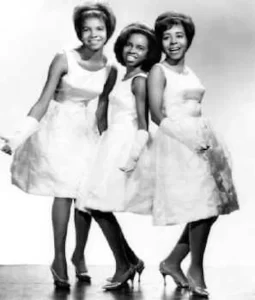
The Dixie Cups
The Dixie Cups made a lasting impact on rock and roll music by bringing a fresh, New Orleans-influenced sound to the girl group era of the 1960s. Their biggest hit, “Chapel of Love,” reached No. 1 on the Billboard Hot 100 in 1964, replacing The Beatles at the top of the charts and proving that American girl groups still held strong influence during the British Invasion. Their blend of pop, R&B, and doo-wop added a southern flair to the girl group sound, helping to expand the stylistic boundaries of rock and roll. The Dixie Cups also brought cultural authenticity to their music, especially with songs like “Iko Iko,” which introduced elements of Creole and Mardi Gras tradition into mainstream pop and rock. Their success showcased the richness of regional sounds in shaping popular music and helped pave the way for more diverse voices in the rock and roll landscape.
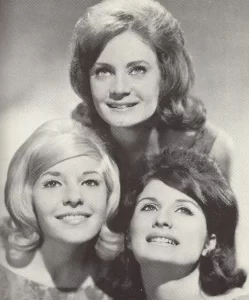
The Angels
The Angels made a notable contribution to rock and roll music by blending catchy pop melodies with bold, youthful energy. Their 1963 hit “My Boyfriend’s Back” became a defining song of the girl group era, combining humor, attitude, and a strong narrative voice. Unlike many female groups of the time, The Angels projected a tough, confident image, influencing the way women were portrayed in rock music. Their sassy style and spirited vocals helped shift the girl group genre from sweet and innocent to more assertive and rebellious. The Angels’ success also showed that independent labels could produce national hits, inspiring future artists and producers. Their influence can be seen in later rock and punk acts that embraced female empowerment and storytelling. By adding attitude and edge to the girl group sound, The Angels helped shape the evolving voice of women in rock and roll.